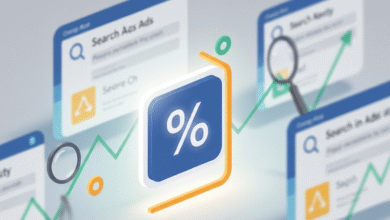Geospatial AI at Scale: Innovations from Google Earth
▼ Summary
– Google launched **Google Earth AI**, a suite of geospatial AI models and datasets to address global challenges like climate change and urban planning.
– The platform features **AlphaEarth Foundations**, a core AI model that processes vast geographical data into actionable insights for real-world applications.
– Key applications include **advanced weather prediction, flood forecasting, and wildfire detection**, aiding disaster preparedness and response efforts.
– The technology also supports **urban planning and public health** by analyzing imagery, population dynamics, and mobility patterns for smarter decision-making.
– Google Earth AI powers practical tools like **flood/wildfire alerts in Google Search/Maps** and is accessible via Google Cloud, benefiting both individuals and organizations.
Google is advancing its commitment to global problem-solving, recently announcing Google Earth AI, a new collection of geospatial artificial intelligence models and datasets designed to tackle some of the planet’s most pressing challenges. This initiative, spearheaded by Chris Phillips, VP and General Manager for Geo, and Yossi Matias, VP of Engineering and Research, represents years of development in applying AI to real-world issues.
The core of Google Earth AI lies in its ability to process vast amounts of geographical data, transforming it into actionable insights. A key component of this new suite is AlphaEarth Foundations, a foundational model that underpins many of the specific applications. This expands on Google’s prior work in Geospatial Reasoning, aiming for a more comprehensive approach to understanding our world.
Among the notable applications are advanced weather prediction models, offering more detailed and localized forecasts. This capability is critical for sectors ranging from agriculture to disaster preparedness. The platform also includes sophisticated flood forecasting capabilities, providing alerts that can give communities crucial extra time to prepare for rising waters. Similarly, wildfire detection algorithms enhance early warning systems, allowing for quicker response to emerging blazes, a vital tool as extreme weather events become more frequent.
Beyond natural disasters, Google Earth AI extends its reach into urban and public health domains. Models within the collection offer a rich understanding of imagery, population dynamics, and urban mobility patterns. This data helps city planners optimize infrastructure, identify areas needing improved services, and develop more sustainable urban environments. For public health, the insights can aid in tracking disease spread or allocating resources more effectively, particularly in densely populated areas.
These models are not merely theoretical; they already power features millions rely on daily. Flood and wildfire alerts delivered through Google Search and Maps are direct results of this technology. Furthermore, Google Earth AI provides valuable insights through platforms like Google Earth, the Google Maps Platform for developers, and Google Cloud for enterprises. This integration allows for a broad application of the technology, from individual users receiving timely warnings to organizations making strategic decisions based on environmental data.
Google’s continued investment in this area underscores a clear objective: to equip people with the information necessary to address some of the significant challenges of our era. By making complex geospatial data accessible and understandable through AI, the initiative aims to foster a more informed and resilient global community. The focus remains on practical applications that deliver tangible benefits, reflecting a deep commitment to environmental stewardship and societal well-being.



